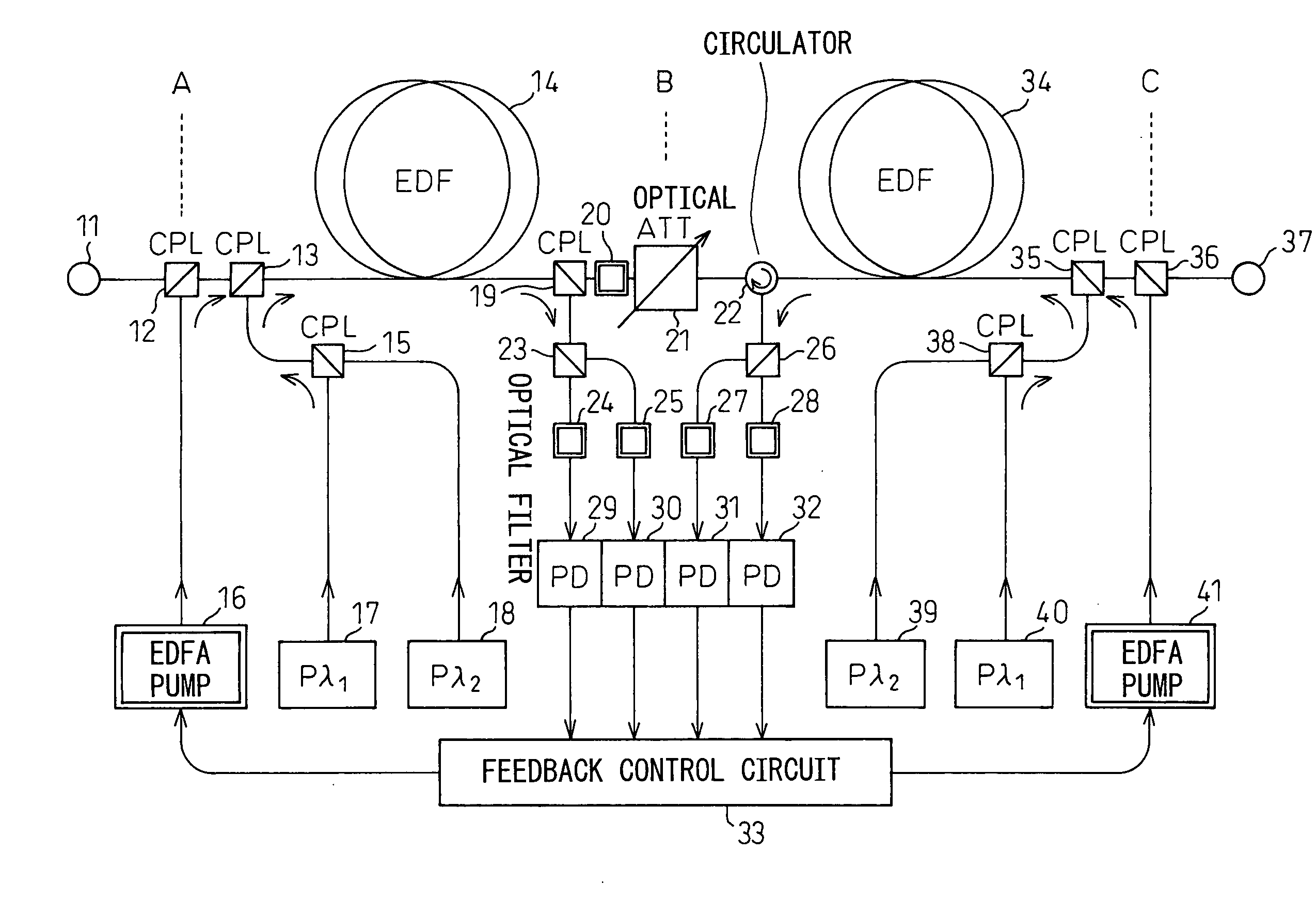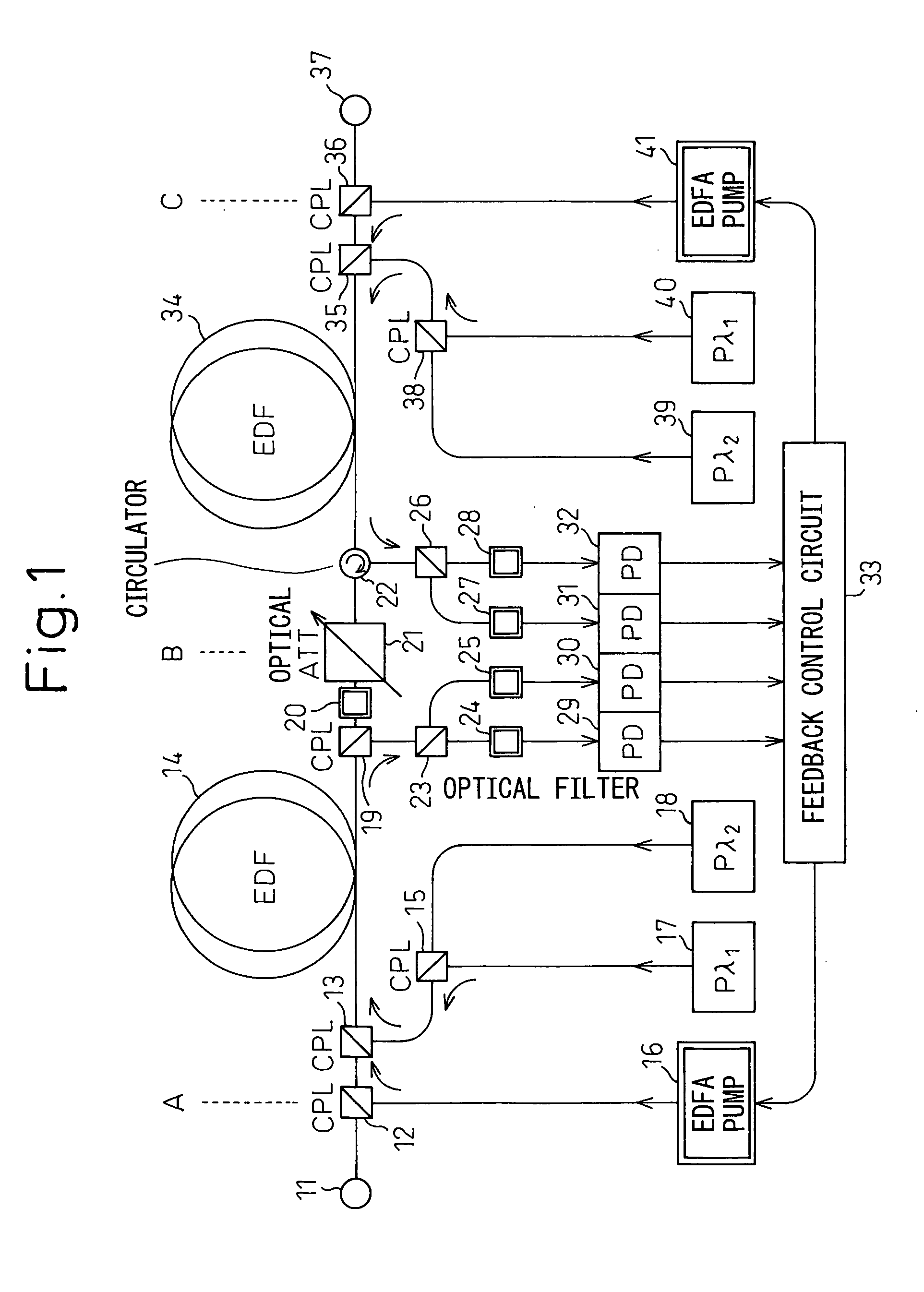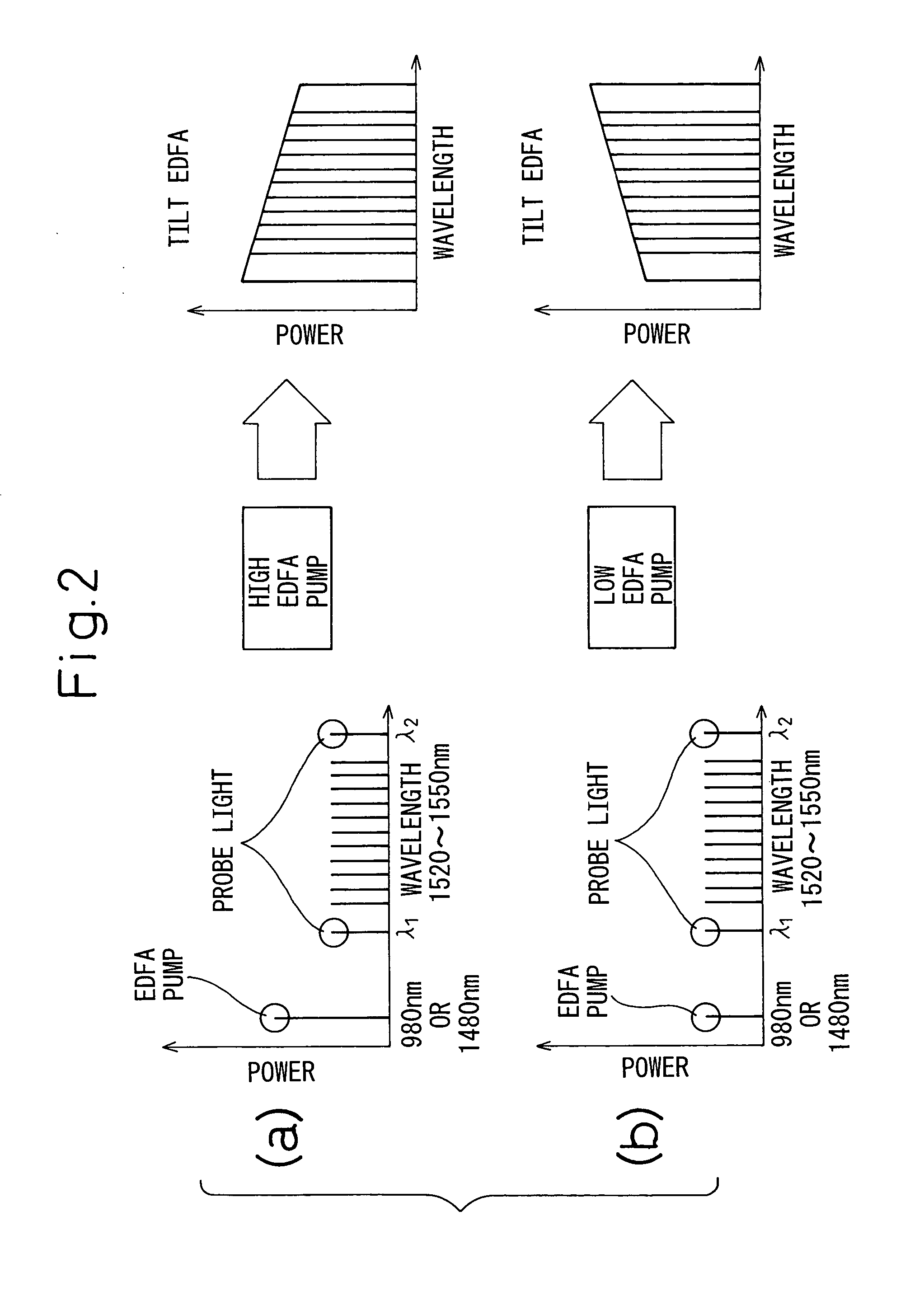Multistage optical amplifier having tilt compensation feature
a multi-stage optical amplifier and tilt compensation technology, applied in the field of optical amplifiers, can solve the problems of reducing the transmission and reducing the transmission quality of a wideband wdm transmission system. , the effect of reducing the transmission quality
- Summary
- Abstract
- Description
- Claims
- Application Information
AI Technical Summary
Benefits of technology
Problems solved by technology
Method used
Image
Examples
first embodiment
[0044]FIG. 1 shows a multistage optical amplifier having a tilt compensation feature according to the present invention. Though a two-stage optical amplifier is exemplified in this example, the present invention is not limited to such a configuration.
[0045] In FIG. 1, a main signal is input from an input port 11 and, in an optical coupler (CPL) 12, coupled with a pumping light from an EDFA pumping section (EDFA Pump) 16 for the former stage. The signal is further coupled with two probe lights Pλ1 and Pλ2 from probe light sources 17 and 18, respectively, for the former stage via optical couplers (CPL) 15 and 13 and, then, input to an erbium doped fiber (EDF) 14 for the former stage.
[0046] The EDF 14 amplifies the input main signal and probe lights by the pumping light and a portion of the amplified signal is separated by an optical coupler (CPL) 19. The portion of the signal separated by the optical coupler 19 is further divided into two waves in a subsequent optical coupler (CPL) 2...
second embodiment
[0070]FIG. 6 shows a multistage optical amplifier having a tilt compensation feature according to the present invention. Though a two-stage optical amplifier is exemplified also here, the present invention is not limited to such configuration.
[0071] In FIG. 6, a Raman fiber amplifier (RAMAN) 61 is adopted as an optical amplifier in the latter stage and, therefore, a Raman fiber pumping section (RAMAN Pump) 62 is provided. Other configuration is similar to that in FIG. 1.
[0072] In general, the EDFA can achieve flat gain characteristics only in a relatively narrow bandwidth and the range of the available pumping light power in such bandwidth is restricted. On the other hand, in the Raman fiber amplifier that amplifies signals via stimulated Raman scattering in optical fibers, gain bandwidth is not restricted unlike in the EDFA and, further, arbitrary gain characteristics can be achieved to some extent by using a plurality of pumping light powers. However, in the Raman fiber amplifier...
third embodiment
[0093]FIG. 12 shows a multistage optical amplifier having a tilt compensation feature according to the present invention. Though a two-stage optical amplifier is exemplified also in this example, the present invention is not limited to such configuration.
[0094] In FIG. 12, the multistage optical amplifier is provided with two latter-stage Raman fiber pumping sections 63 and 64 that can be controlled independently by the feedback control section 33 and utilizes a well-known four-wave mixed light generated by pumping lights λ1′ and λ2′ from the Raman fiber pumping sections 63 and 64 so that the pumping light for the former-stage EDF 14 can also be generated. This eliminates the need for the former-stage EDFA pumping section 16 and the optical coupler 12 for coupling the pumping light from the EDFA pumping section 16 to the transmission path of the main signal and, therefore, these elements are omitted in FIG. 12. On the other hand, an optical coupler 65 is provided for multiplexing th...
PUM
 Login to View More
Login to View More Abstract
Description
Claims
Application Information
 Login to View More
Login to View More - R&D
- Intellectual Property
- Life Sciences
- Materials
- Tech Scout
- Unparalleled Data Quality
- Higher Quality Content
- 60% Fewer Hallucinations
Browse by: Latest US Patents, China's latest patents, Technical Efficacy Thesaurus, Application Domain, Technology Topic, Popular Technical Reports.
© 2025 PatSnap. All rights reserved.Legal|Privacy policy|Modern Slavery Act Transparency Statement|Sitemap|About US| Contact US: help@patsnap.com



